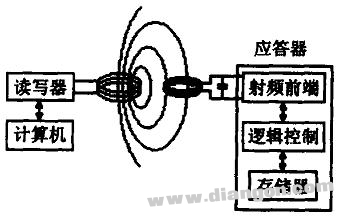RFID technology principle - solutions - Huaqiang Electronic Network
RFID application systems are typically composed of a reader/writer and an RFID tag, as illustrated in Figure 1. The reader/writer functions as a terminal device that enables data reading, writing, and storage from the RFID tag. It is made up of a control unit, a high-frequency communication module, and an antenna. On the other hand, the RFID tag is a passive transponder, mainly consisting of an integrated circuit (IC) chip and its external antenna. The RFID chip usually integrates RF front-end circuits, logic control units, and memory. Some advanced chips even combine the antenna directly on the same chip.

Figure 1: Schematic diagram of the RFID system
The basic working principle of an RFID system involves the interaction between the tag and the reader. When the RFID tag enters the radio frequency field of the reader, the antenna induces a current that is used as power for the chip through a boosting circuit. This current carries the stored information, which is then detected by the RF front-end circuit. The signal is converted into a digital format and sent to the logic control unit for processing. If data needs to be retrieved, it is fetched from the memory and transmitted back to the RF front-end via the logic control unit, finally being sent back to the reader through the antenna.
As you can see, the antenna plays a crucial role in the communication process between the RFID tag and the reader. For passive tags, the antenna is essential for capturing enough energy from the electromagnetic field generated by the reader. Additionally, the antenna determines the communication channel and method between the two components. Therefore, selecting the right antenna is vital for ensuring efficient and reliable RFID performance.
Today, RFID technology is widely applied across various industries, and several international standards have been established, such as ISO 10536, ISO 14443, ISO 15693, and ISO 18000. These standards not only define the communication protocols but also specify key physical characteristics like operating distance, frequency, and coupling mode. As these specifications are standardized, the selection of RFID antennas becomes more precise and consistent. Below are some of the most commonly used types of RFID antennas along with their performance details.
Low Voltage Abc Accessories,Steel Strain Clamp Nes-b1,Four Eye Tension Clamp,Dead End Clamp For Nfc Standard
Shahe Yipeng Import and Export trading Co., LTD , https://www.yppolelinehardware.com